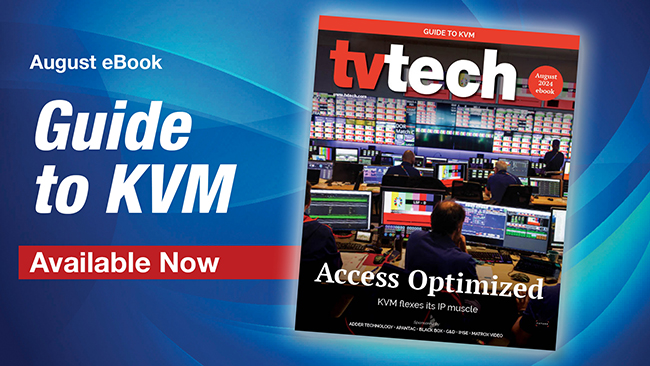TV Tech's Guide to KVM Now Available
News and insight on how KVM systems are enhancing content production workflows

While AI was all the rage at this year’s NAB Show, there was another fast moving trend that caught the attention of perhaps even a larger portion of the attendees: remote and virtual production.
The move towards these types of productions are being driven by two main factors that came into focus during the pandemic: costs and environmental impact. Sending fewer personnel to cover live events helps save money and promote sustainability, both of which are high on broadcasters’ priority lists these days.
That trend is also driving demand for improved and more efficient workflows, both of which are being enabled by advances in KVM (keyboard, video and mouse), a technology that has been around for decades but is growing in importance, especially as it moves from SDI to IP.
The need for reliable, high-performance equipment to handle complex workflows and live broadcasting needs is constant and with increasing demands to lower latency while at the same time handle higher resolutions efficiently, more media companies will look to KVM systems to help them control the various elements that make up a live production.
In our latest Guide to KVM, we look at the latest trends driving the development of these increasingly important production workhorses.
The professional video industry's #1 source for news, trends and product and tech information. Sign up below.
